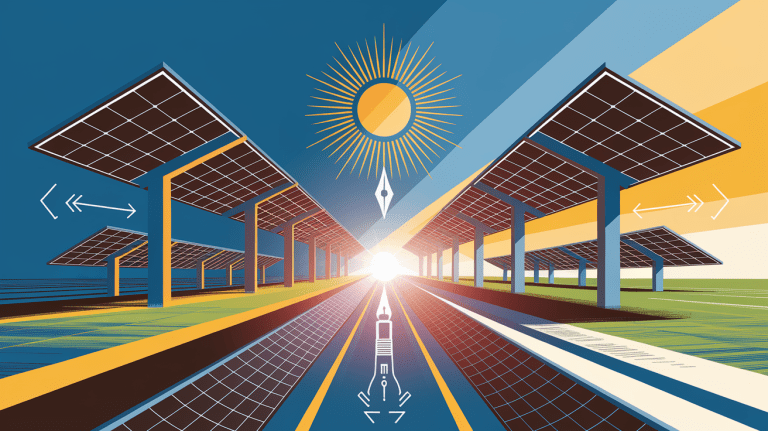Streamlining the Grid: Interconnection Queue Reform for Distributed Generation
Queue Quicksand: Why Reform Can’t Wait
The growing demand for renewable and distributed energy resources is colliding with a bureaucratic bottleneck: the interconnection queue. These queues, managed by grid operators such as independent system operators (ISOs) and regional transmission organizations (RTOs), are intended to ensure safe, reliable integration of new projects into the transmission and distribution systems. However, mounting backlogs are slowing the energy transition and inflating costs for developers. Without reform, the pace of solar interconnection, wind interconnection, and energy storage interconnection could fall short of national and state clean energy goals, according to the U.S. Department of Energy.
The Roadblocks Today: Current Queue Challenges
Today’s interconnection process often stretches into years. The queue is hampered by lengthy study timelines, including system impact studies, facilities studies, and cluster studies that determine necessary transmission upgrades and cost allocations. Grid operators report speculative requests — projects without firm site control or financial readiness — clogging the pipeline, making it harder for viable distributed generation projects to proceed. The lack of standardized interconnection procedures contributes to inconsistent timelines and fees.

Data from the Federal Energy Regulatory Commission (FERC) shows that some projects face multi-year waits and escalating interconnection costs, particularly in congested regions with limited grid capacity. Developers also face challenges coordinating with utilities for distribution system connections, leading to duplicative reviews and delays.
Reform Goals: Speed, Transparency, Fairness
The primary goals of interconnection queue reform are straightforward: accelerate timelines, improve transparency in queue management, and ensure fairness for all applicants. Speeding the interconnection process helps ensure that renewable energy projects contribute to grid reliability before policy deadlines. Transparency in study results, cost allocation, and prioritization criteria can discourage speculative filings and strengthen regulatory compliance. Fairness ensures distributed generation developers compete on equal footing with large-scale transmission-connected projects.

Key Reform Strategies
Industry experts and regulators are pursuing several strategies to address queue congestion:

- Financial Readiness Requirements: Mandating deposits and proof of site control to deter speculative interconnection requests.
- Cluster Study Process: Grouping projects for common grid studies to reduce duplication and speed completion.
- Fast Track Process: Streamlining utility interconnection reviews for small, low-impact distributed energy resources.
- Transparent Cost Allocation: Ensuring network upgrade and interconnection fees are calculated consistently across applicants.
- Improved Queue Management Tools: Modernizing data systems for ISOs, RTOs, and utilities to track progress and communicate with developers in real time.
FERC’s recent final rule on interconnection reform incorporates many of these strategies, aiming to standardize the interconnection process across the country.
Impact on Developers and the Grid
For developers, reforms promise reduced interconnection timelines and clearer cost expectations, lowering financial risk and improving project viability. Streamlined procedural steps for renewable energy interconnection—whether solar, wind, or hybrid energy storage—mean fewer months spent in queue purgatory and quicker paths to securing interconnection agreements.
On the grid side, accelerating distributed generation integration can help balance supply and demand, support grid modernization, and enhance power quality. Reducing interconnection process delays benefits consumers by expanding clean energy availability and potentially lowering electricity costs over time.
From Blueprint to Reality: Implementation Steps
Moving from policy announcements to operational reform requires coordinated action between regulators, grid operators, and utilities. Key implementation steps include:
- Updating interconnection standards to support distributed energy resource integration.
- Deploying advanced queue management platforms for ISOs and RTOs.
- Training utility interconnection teams to use standardized processes.
- Aligning transmission system and distribution system planning cycles to streamline network upgrades.
- Regularly publishing queue status reports for public review.
States such as Massachusetts, according to state utility regulators, are implementing their own reforms alongside federal initiatives to address regional challenges.
Energizing Tomorrow: Next Steps in the Reform Journey
While reforms are underway, continuous monitoring will be essential to ensure that queue times drop and renewable energy deployment accelerates. Stakeholders advocate for further regulatory adjustments to address emerging technologies like distributed battery storage and hybrid projects that require both transmission and distribution system access.
Ultimately, effective interconnection queue reform for distributed generation is not just a bureaucratic upgrade—it’s a critical step in the energy transition, strengthening grid reliability, enhancing power quality, and making clean energy integration more predictable and cost-effective.
As FERC’s initiatives roll out and states adopt complementary measures, the industry will be watching closely to see if queue reform can turn plans for a modernized grid into reality.







